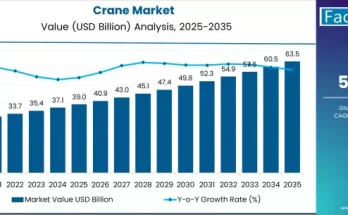According to a recently revamped study published by Fact.MR, the global glass bonding adhesives market is poised to flourish at a CAGR of 7.8% from 2022 to 2032, expected to be valued at US$ 7.9 Billion. As of 2022, the market is forecast to be valued at US$ 3.7 Billion. Increasing demand from the construction industry is expected to keep growth prospects afloat in the long run.
From 2015 to 2021, sales of glass bonding adhesives grew at a CAGR of 6%, concluding at a value of US$ 3.4 Billion. The market is fast gaining traction with a surge in demand for bonding agents to be used between glass and other materials such as metals, rubbers, plastics, and others, from various industries such as electronics, transportation, and construction. As this kind of adhesive provides the best method of joining for glass, it is highly preferred in the architecture industry.
Key Takeaways from the Market Study
- Global glass bonding adhesives market to expand over 2x from 2022 to 2032
- S to be at the vanguard, registering a 7.5% value CAGR until 2032
- Germany likely to emerge as the 2nd fastest expanding market, growing at a 7% CAGR
- China to be a significant player, expected to yield US$ 3 Billion in value by 2032
- Japan & South Korea to be major growth influencers, collectively expanding at over 13% CAGR
- Construction industry to comprise bulk of glass bonding adhesives usage, capturing 50% revenue
- UV curable glass bonding adhesives to be the most preferred type until 2032
“The building and construction sector has risen significantly over the last five years and is expected to increase much more in the future. As a result, glass bonding adhesives are in great demand for usage in this industry,” writes a Fact.MR Analyst.
Competitive Landscape
To capitalize on new prospects, leading players in the glass bonding adhesives market are focusing the development of a diverse range of high-quality products.
- In 2020, 3M Company, for example, debuted its new broad line of glass bonding adhesives, such as 3MTM Polyurethane Glass Adhesive Sealant 590 and others, which are crash tested to FMVSS 212 and appropriate for structural glass bonding.
- Dymax will introduce its new Dymax UV light-curing industrial glass bonding adhesives for the joining of plastics, glass, metals, and other materials in 2020.
- In the year 2020, DELO introduced their new PHOTOBOND adhesives, which are suitable for gluing plastic to glass.
Ashland, Dow, H.B. Fuller, 3M Company, Parker Hannifin Corp, Master Bond, Dymax, Bohle Ltd., DELO, ThreeBond Holding Co., Ltd, and Sika AG are among the businesses profiled in the study on the worldwide glass bonding adhesives market.
More Valuable Insights
Fact.MR, in its new offering, presents an unbiased analysis of the global airborne weapon system market, presenting historical analysis from 2015 to 2021 and forecast statistics for the period of 2022-2032.
The study reveals essential insights on the basis of type (UV curable, epoxy, cyanoacrylate, polyurethane, silicone and others) and end use industry (building & construction, automotive & transportation, electrical & electronics, healthcare, industrial assembly, woodworking and others) across seven major regions (North America, Latin America, Europe, East Asia, South Asia & ASEAN, Oceania and Middle East & Africa).
About the Chemical and Material Division at Fact.MR
Expert analysis, actionable insights, and strategic recommendations of the highly seasoned chemical and material team at Fact.MR helps clients from across the globe with their unique business intelligence needs. With a repertoire of over thousand reports and 1 million-plus data points, the team has analyzed the automotive industry across 50+ countries for over a decade. The team provides unmatched end-to-end research and consulting services. Reach out to explore how we can help.
For more information, refer to our market research report or contact the PR author.



